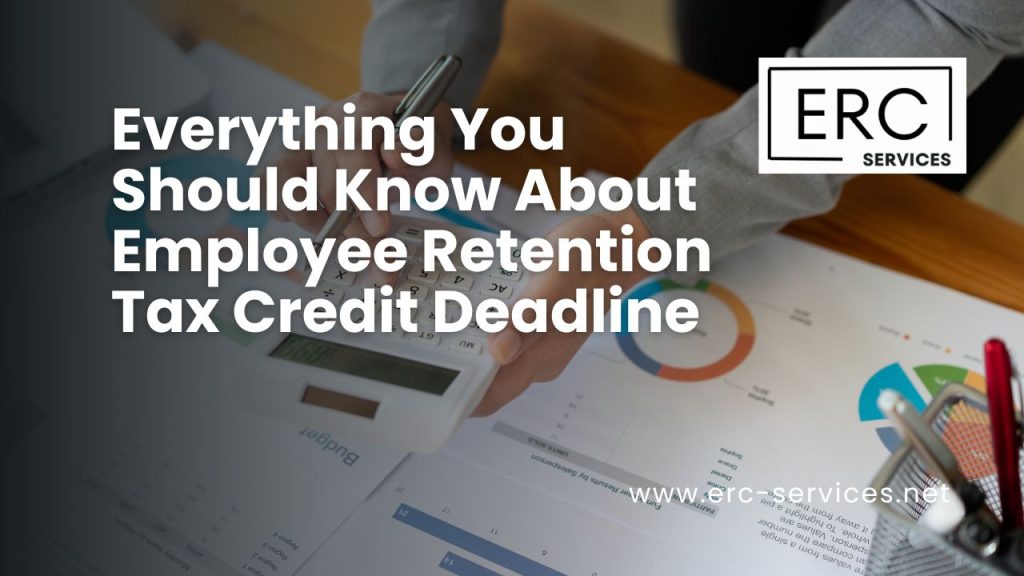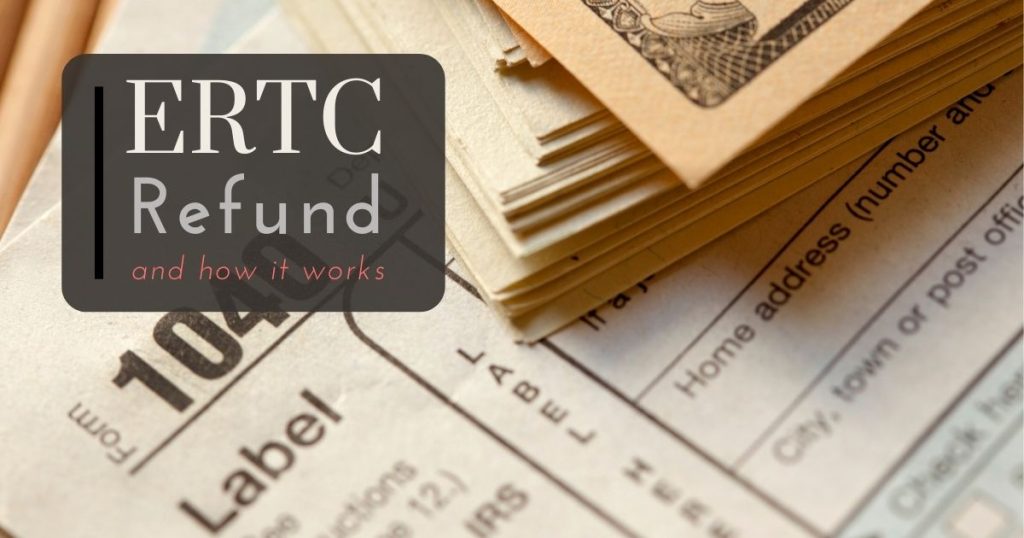ERC Deadline Approaching: Claim Yours Now!
As the COVID-19 pandemic ravaged the United States, businesses were struggling to stay afloat and retain their employees. The Employee Retention Tax Credit (ERTC) has been a valuable resource for businesses to keep their doors open and keep their workforce employed. However, time is running out to take advantage of this tax credit, as the ERC deadline date is quickly approaching.
Like a lifeline thrown to a struggling swimmer, the ERTC has provided much-needed relief to businesses across the country. This tax credit has helped companies retain employees, keep their operations running, and stay afloat amidst the economic turmoil caused by the pandemic.
However, with the program set to expire, it's crucial for eligible businesses to act quickly and claim their Employee Retention Credit refund before it's too late. In this article, we will provide a comprehensive overview of the ERTC, including eligibility requirements, deadlines, and how to claim the tax credit.

ERTC Basics
The basics of the Employee Retention Tax Credit (ERTC), including eligibility requirements, credit limits, and deadlines for claiming the credit, are crucial for businesses seeking to benefit from this valuable tax credit. The ERTC benefits businesses that have been adversely affected by the COVID-19 pandemic and aims to help retain their employees.
Eligibility for the credit is based on the company's revenue, which should have declined by at least 20% in 2020 or 2021 compared to the corresponding quarter in 2019.
The tax credit process requires businesses to record eligible wages on their federal payroll tax returns and receive appropriate tax credits. The credit limit for ERTC is wages earned from October 1, 2021, and the deadline for qualified firms to claim ERTC is July 31, October 31, and December 31, 2021.
Businesses must complete a quarterly payroll tax form using Form 941 to get the credit, and the turnaround time is 90 to 120 days for eligible employers to file an updated refundable tax credit with the IRS.
By understanding the ERTC basics, businesses can take advantage of this beneficial tax credit and retain their employees during these challenging times.
Eligibility Requirements
Eligibility for the Employee Retention Tax Credit is based on a significant reduction in gross receipts in 2020 or 2021, defined as a drop of at least 50% in any calendar month compared to the same period in 2019, or a drop of at least 20% in any fiscal quarter encompassing January 1 to September 30, 2021.
In addition to this, the credit is available for businesses that were partially or fully suspended due to COVID-19 government orders or experienced a significant decline in gross receipts.
To calculate the credit, companies can use wages (up to $10,000 per employee) paid between March 12, 2020, and January 1, 2021, and thereafter, wages paid between January 1, 2021, and December 31, 2021.
Companies also have the option to make retroactive claims and review salaries earned after March 12, 2020, to see if they qualify for the credit.
To claim the credit, eligible businesses must file Form 941, Employer's Quarterly Federal Tax Return, and submit it to the IRS.
The form provides detailed information on the wages and salaries paid to employees during the relevant period, and the credit is applied against the employer's share of Social Security taxes.
Businesses should be aware of the ERTC deadline, which is July 31, October 31, and December 31, 2021, depending on the quarter in which the credit is being claimed.
Claiming the Credit
To apply for the Employee Retention Tax Credit (ERTC), businesses must file Form 941 and provide detailed information on their employees' wages and salaries during the relevant period. This payroll documentation includes the amounts of qualified wages and health plan expenses for each employee, the total number of employees, and the number of employees who receive qualified wages.
Employers can claim the ERTC for each quarter in which they meet eligibility requirements, and the deadline for qualified firms to claim the credit for 2020 and 2021 is approaching.
Businesses can also review their salaries earned after March 12, 2020, to determine if they are eligible for retroactive claims. Companies have three years after the program's closure to claim retroactive ERTC credits.
To claim the credit for prior quarters, businesses must complete Form 941-X, Request for Refund, for the relevant quarter(s) in which the eligible wages were received. It is crucial for eligible employers to file an updated refundable tax credit with the IRS within the deadline to avoid failure to pay penalties.
Important ERC Deadlines
Impending cutoff dates for the Employee Retention Tax Credit program demand immediate action from eligible businesses to secure a potentially massive tax credit.
The program, established by the CARES Act, aims to assist businesses in keeping their employees on payroll during the COVID-19 pandemic.
Eligible businesses must ensure that their quarterly payroll data is accurate and complete and file for the credit by the applicable deadline.
To claim the Employee Retention Tax Credit, businesses must complete a quarterly payroll tax form using Form 941, which includes eligible payroll data.
The credit is a refundable credit, meaning that if the amount of the credit exceeds the business's payroll taxes, the IRS will issue a refund for the difference.
The deadline to claim the credit for each quarter is July 31, October 31, and December 31, 2021.
Businesses must ensure that they have all the necessary information and paperwork to file for the credit in a timely manner, as failure to do so may result in penalties.
Frequently Asked Questions
How long does it take for the IRS to process an ERTC claim?
The processing time for an ERTC claim filed with the IRS can take up to 90 to 120 days for eligible employers. The time frame is subject to adherence to documentation requirements, including completing Form 941-X for the applicable quarter(s).
Can companies claim ERTC for employees who were furloughed during the covered period?
Under ERTC eligibility guidelines, companies can claim the credit for furloughed employees who were paid during the covered period. However, the credit is only available for wages paid to employees who were not providing services during the period.
Are non-profit organizations eligible for ERTC?
Non-profit organizations are eligible for the Employee Retention Tax Credit (ERTC) if they meet the same requirements as for-profit businesses. ERTC requirements are based on 2019 data and a significant reduction in gross revenues in 2020 or 2021.
Can companies claim ERTC for employees who are no longer with the company?
Former employees are not eligible for ERTC as they are no longer on the payroll. The eligibility for ERTC is based on current employees and their wages. Therefore, companies cannot claim ERTC for former employees.
Is there a limit to the amount of ERTC that a company can claim?
The Employee Retention Tax Credit (ERTC) has a claim limit based on eligible expenses, with wages up to $10,000 per employee being used to calculate the credit. There is no specific limit on the total amount of credit that a company can claim.







 The ERTC or Employee Retention Tax Credit is a federal tax credit aimed at helping businesses affected by the coronavirus pandemic. It is a refundable tax credit for employers that are subject to closure due to government orders or have experienced a significant decline in gross receipts. The ERC provides businesses with a credit of up to 50% of wages paid to employees, up to $10,000 per employee, during the period of economic hardship. Businesses can also take advantage of additional credits depending on the size of their workforce and wages they have paid. This tax credit is part of the Coronavirus Aid, Relief, and Economic Security (CARES) Act and is designed to help business owners keep their employees on payroll and remain operational during this difficult time.
The ERTC or Employee Retention Tax Credit is a federal tax credit aimed at helping businesses affected by the coronavirus pandemic. It is a refundable tax credit for employers that are subject to closure due to government orders or have experienced a significant decline in gross receipts. The ERC provides businesses with a credit of up to 50% of wages paid to employees, up to $10,000 per employee, during the period of economic hardship. Businesses can also take advantage of additional credits depending on the size of their workforce and wages they have paid. This tax credit is part of the Coronavirus Aid, Relief, and Economic Security (CARES) Act and is designed to help business owners keep their employees on payroll and remain operational during this difficult time.

